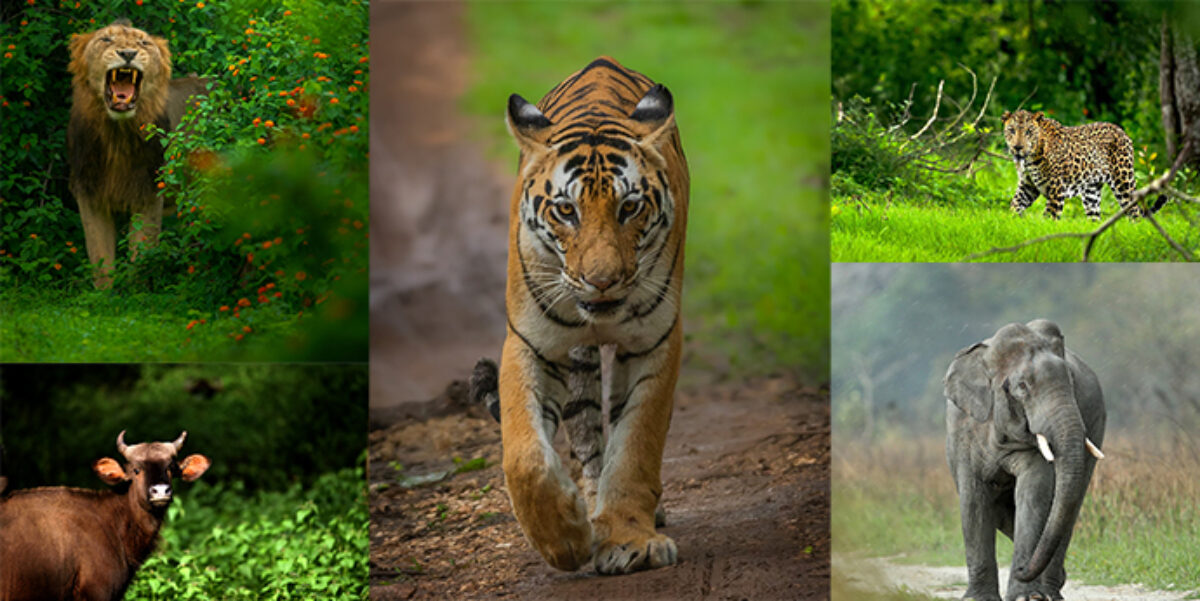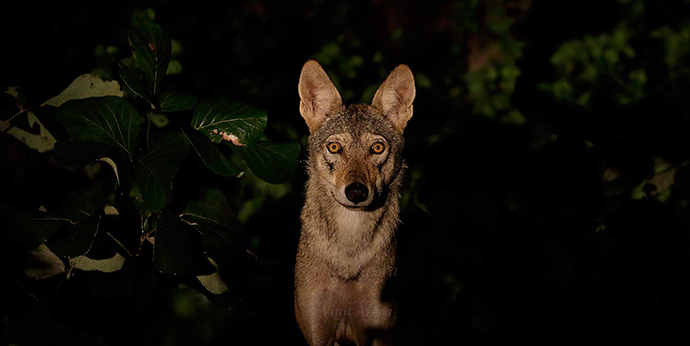Wildlife of India

Wildlife of India
From lush green forests to sparkling rivers, India has a wide range of forest reserves with an abundance heritage of wildlife.
It has over 91,000 species of animals[1] spread over 655 National Parks and Sanctuaries comprising an area of 1,60,276.93 sq. km or 4.87% of India’s geographical area[2]. India has always been a gala for wildlife enthusiasts from around the world with its fascinating myriad of flora and fauna that has remained both unique and mysterious for nature lovers.
A paradise of wildlife enthusiasts the forests are also home to various endangered species such as Bengal Tigers, Asiatic Lions, Snow leopards, Blackbucks, One-horned rhinoceros, Nilgiri Tahr and Kashmiri Red Stag spread over India’s diverse range of forests: from the rainforest of Kerala in the south to the alpine pastures of Ladakh in the north, from the deserts of Rajasthan in the west to the evergreen forests in the north-east.
India is the only country in the world with native populations of both tigers and lions. Among plants, 33% of the world’s species are endemic to India, which means they are found only in India. India is home to 12% of the world’s bird species. The Kharai, a unique breed of camels that can swim are found only in Kutch, Gujarat.
Exotic and rare animals like Malabar Giant squirrel, Golden Langur, Lion-Tailed Macaque are some of the few animals that make India’s biodiversity truly incredible.
Human encroachment is one of the greatest threats to India’s wildlife. To counter this threat, the system of national parks and protected areas was introduced. In 1972, India enacted the Wildlife Protection Act and Project Tiger to protect wildlife habitat. India now has over 655 National Parks and Sanctuaries Protecting wildlife is extremely important for the present as well as the future generations.
Life in the wild promotes biological diversity, which in turn, provides materials for food, clothing, medicines, papers, beverages and spices for daily use.
From the days of hunting and gathering—when hunting animals and gathering fruits sustained humans—till the present time, human society, without even being aware of it, always depended on nature and wildlife. Therefore, it is our duty to save the rich, vibrant and diverse wildlife of India
Sources:
[1]Data from International Union of Conservation (IUCN)
[2]Data from Conservation India
Blog by
Indranil Paul
His work can be seen in our home page images.

India Office
Location: Plot No. 9 Vaishav Inn Apartment Bandhu Soni Layout, near Nagoba Mandir Square, Sambhaji Nagar, Nagpur, Maharashtra 440022
Phone: +91-9755725345, +91-9766983240 +91-7719806444
Email: naturesprout01@gmail.com, enquiry@naturessprout.com
Openning hours: 10:00 AM - 7:00 PM
Jungle Safari
- Tadoba National Park
- Pench National Park
- Bandhavgarh National Park
- Kanha National Park
- Panna National Park
- Gir National Park
- Sundarban National Park
- Nagzira Wildlife Sanctuary
- Jim Corbett National Park
- Ranthambore National Park
- Kaziranga National Park
- Neora Valley National Park
- Satpura Tiger Reserve
- Kabini Wildlife Sanctuary
- Jawai National Park
- Manas National Park
- Sattal National Park
- Bor National Park
- Umred Karhandla Wildlife Sanctuary


